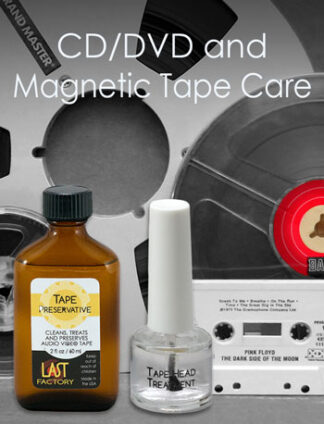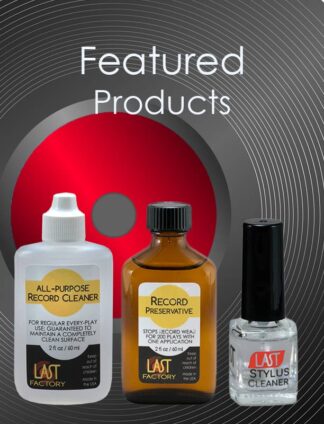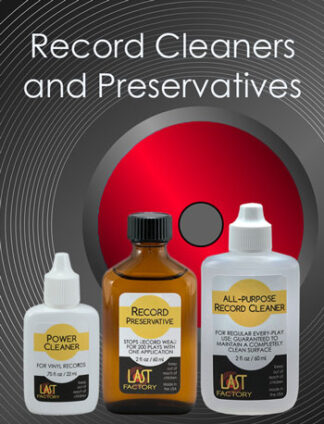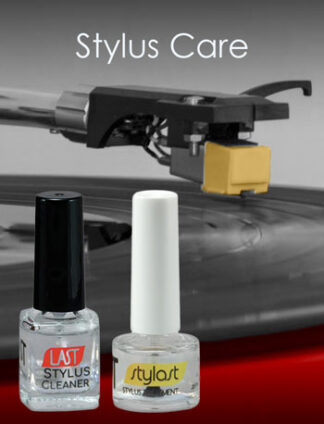LAST TAPE TREATMENT
TECHNICAL PAPER – 1987 by Walter Davies
INTRODUCTION
 In the last two decades there have been many advances in the art of magnetic recording. Frequency response, amplitude linearity, and signal-to-noise ratio have constantly been extended. Various non-linearities and distortion products are being pushed to ever-smaller values. With all of the developments in recorder and tape technology, at least one problem has continued to be resistant to solution …scrape flutter.
In the last two decades there have been many advances in the art of magnetic recording. Frequency response, amplitude linearity, and signal-to-noise ratio have constantly been extended. Various non-linearities and distortion products are being pushed to ever-smaller values. With all of the developments in recorder and tape technology, at least one problem has continued to be resistant to solution …scrape flutter.
TAPE CONSTRUCTION
The surface properties of the heads of a tape recorder are very different than those of the magnetic media. The metal, alloy, and glass ferrite materials that are in contact with the magnetic tape are characterized as having a non-polar surface of low energy.
The binder which holds the magnetically-sensitive material to the flexible tape film is made up of components which are polar in nature and which have a high surface energy. This characteristic helps the binder accomplish its function of holding the oxide particles in a flexible matrix which binds itself to the tape film. But this condition of high surface energy in the binder means other materials (heads, guides) have a tendency to adhere to the moving tape. And that leads to stiction, stick-slip, or scrape flutter.
CAUSE OF SCRAPE FLUTTER
Scrape flutter occurs as the tape moves past heads and non-rotating guides. The tape momentarily adheres to the surface over which it is passing. Tension, exerted by the capstan drive, overcomes the adhesive forces and the tape breaks free and jump ahead a microscopic distance. Adhesion is then re-established and the whole process repeats itself millions of times during the length of a tape. Thinner tape and slower transport speeds aggravate the condition. When at its worst, scrape flutter causes an audible squeal to emanate from the tape transport. The start-stop motion of the tape creates excessive distortion of the record information and, in worst cases, the audio dsignal is itself modulated by a howling sound.
PROBLEMS WITH LUBRICANTS
However, a standard lubaricant applied to heads and guides is not an effective solution. A lubricant is defined as a substance (eg. grease, oil, soap) that when introduced between two surfaces which move with respect to one another, reduces resistance to movement, heat production and wear by forming a fluid film between those surfaces.
There are three problems with introducing a lubricant between the tape and heads/guides:
- Boundary conditions. Lubricants “wear” off and would be carried away by the first few feet of tape which pass throught the system.
- Contamination. Lubricants will capture and hold loose oxide, dust and debris. This accumulation will build up on the leading edge of heads and will “wedge” the tape away from the critical head gap.
- Thickness. For a lubricant to form a “liquid film” between tape and heads, it must have a finite thickness. But high frequency response and low distortion require intimate contact bewtween head and moving media.
LAST SOLUTION
LAST Tape Head Treatment works because it reduces the surface energy at the interface between media and head. It is applied very sparingly, yet clings tenaciously to the head. There is insufficient treatment to capture and hold loose oxide or other debris. It is a surface chemistry solution to a surface energy problem, not a physical lubricant designed to separate two surfaces which are moving with respect to each other.
APPLICATION
The method of application is quick and very simple. Use the applicator brush to dab a small amount of treatment onto one of the supplied applicator swabs. Then merely move the treated swab over the contact surface of the heads and guides. That is all there is to it.
Heads and guides should be repeated before every tape pass. One treatment will last the length of a tape. There is sufficient treatment for many hundreds of applications. The treatment is dynamic and is consumed in the process of playing or recording a tape.
BENEFITS
The major benefits gained from using the Tape Head Treatment can be directly attributed to an improved head-media interface. High frequency response is better and more linear, signal-to-noise ratio is improved and inter-modulation distortion is reduced. Additional benefits are an increase in head life, and the head environment stays cleaner longer.
LAST Tape Head Treatment is a new solution to and old problem. It will make audible improvements in the recording and subsequent playback of magnetic tape.





